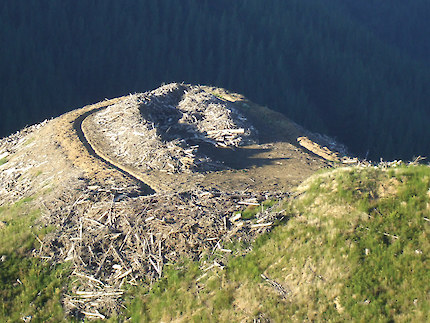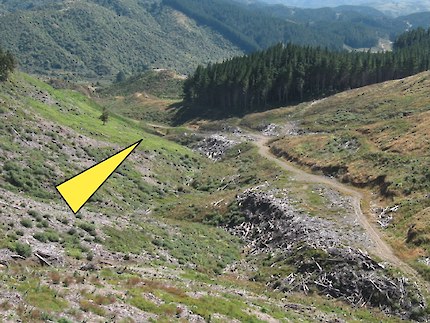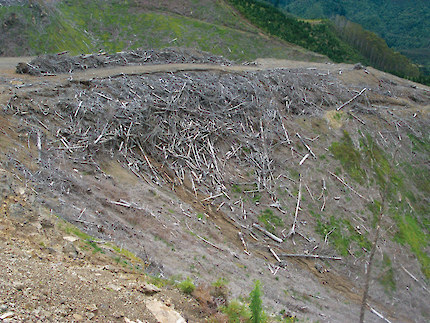Rehab greatly reduces the chance of landing failure, especially in steep and ‘high risk’ locations. Landing failure can have a significant environmental impact. Rehab may also increase the area available to re-plant. Slash on and around landings are sometimes burnt before rehab (burning is not covered here).

- A large berm directs water to solid ground
- Slash has been pulled well back from the landing edge and onto hard ground

- No rehab has occurred!
- Debris was pushed into the waterway on two landings
- The area gets heavy rain, and the culvert crossing (arrow) could fail
- Water mobilises the debris
Fixing the problem

Before
- Not enough slash was removed. Slash was only pulled up on the other side of the skid
- The landing has major tension cracks are in the fill, and there are minor slumps
- Slash is now beyond an excavator’s reach, because no slash bench was built to contain the slash

After
- A bench was made to:
- Reduce risk of fill failure from tension cracks
- Remove the risk of landing fill collapse
- Enable the excavator to reach all the debris
- Debris was put in a safe location. Options include piling up or evenly spreading